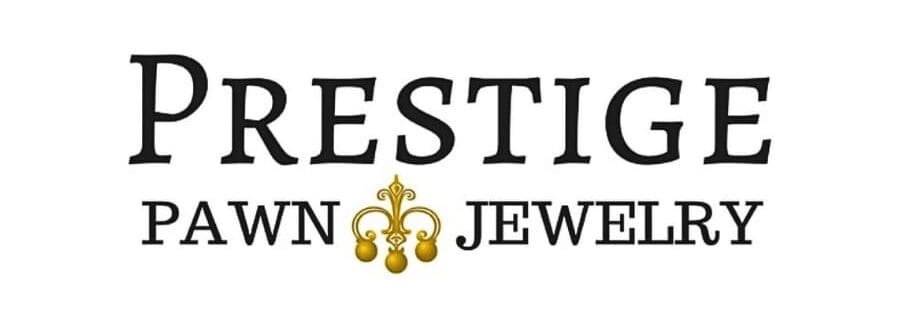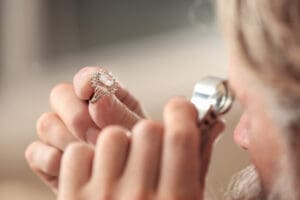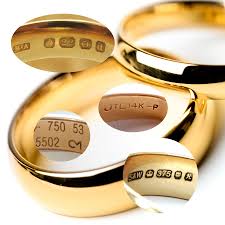How can you tell if it’s a real treasure or just another imposter fooling your eyes with its shiny finish? With “How to Spot Fake Gold Jewelry”, you will be able to spot fake gold jewelry from real gold jewelry with helpful knowledge and techniques of the trade.
In this era of duplicates as numerous as the real thing, being able to differentiate between genuine and artificial is essential. Especially when it comes to something as valuable and cherished as gold jewelry. Learning how to spot fake gold jewelry is a skill. It not only saves us from regretful purchases but also ensures we get what we pay for.
We’ve all been there – gazing at a stunning piece of gold jewelry, hoping it’s authentic. But without knowing how to test its authenticity ourselves or understand those confusing hallmarks on them, our hope rests merely on luck.
This guide aims to turn your hopes into solid confidence. It will do this by showcasing practical methods you can easily apply and show you how to spot fake gold jewelry from real.
Understanding the Properties of Authentic Gold
When you pick up a piece of genuine gold, it’s not just the heft that reveals its veracity; its lustrous yellow hue and lack of magnetic pull are also dead giveaways. The color is the most tell-tale sign. Pure gold is shiny and bright yellow, unlike other metals that can oxidize or tarnish over time.
The Role of Alloys in Gold Jewelry
In jewelry making, pure gold often gets combined with other metals to form alloys. These alloys give us various types of gold like white gold and yellow gold. They’re not only about different colors but also about durability.
An interesting fact here: 100% pure gold isn’t magnetic. If your necklace clings to a magnet, it is time for an acid test or a trip to the jewelers.
The use of alloys in crafting beautiful pieces has been prevalent since ancient times because while 24-carat (pure)gold may have unmatched luster and sheen; its softness makes it impractical for everyday wear. That’s where alloying come into play—they add strength without compromising much on beauty.
The Importance of Millesimal Fineness (Purity) Numbers
Millesimal fineness shows up as three-digit numbers such as 999 for 24-carat pure gold. The three-digit number decreases as the amount of actual gold in your possession does.
To give more context – if you spot ‘750’, that means you’re looking at an item made from 75% real gold or typically known as 18 carats. Now let’s say you find ‘375’ engraved somewhere; this indicates only around 37% percent gold content (9 carats), with other metals making up for rest.
Differentiating Real from Fake with Marks
Beyond learning hallmark meanings, recognizing their absence can be telling too. Authentic pieces will always bear some sort marking whereas counterfeit ones often skip this crucial detail.
Lastly, remember that selling gold below 10 carats as jewelry is prohibited in the United States. So, if you find a piece marked less than ‘417’ (which corresponds to 10 carat), chances are it’s not legitimate gold jewelry.
Mastering hallmarks and purity marks gives us a valuable tool to verify authenticity of precious items without damaging them or needing professional help. Just don’t forget – when in doubt, always seek expert opinion.
Bottom Line:
Master the art of how to spot fake gold jewelry by understanding hallmarks and purity marks. These symbols and numbers give clues about an item’s origin, manufacturer, and gold content. But be on guard for codes like HGP or GP that indicate a thin layer of precious metal over cheaper ones. Keep in mind, genuine pieces always bear some kind of marking while fakes often skip this detail. If you’re hunting for real gold treasures, knowing these hints can really help.
Visual Inspection Techniques for Spotting Fake Gold
Ever bought a shiny gold piece that started showing signs of discoloration after some time? That’s your first clue to spotting fake gold. Discoloration often suggests the item is not pure gold, but rather gold plated.
Gold plating involves coating another metal with a thin layer of real gold. This technique makes jewelry look like genuine gold, although it isn’t. The color may gradually alter with time due to wear and tear or contact with substances.
The Jewelers Loupe Method:
A jewelers loupe can come in handy when inspecting jewelry closely for authenticity signs. Real solid-gold items usually have tiny hallmarks or stamps which indicate their purity levels in karats (K) such as 10K, 14K, 18K or 24K. This standard 10x jewelers loupe also has a light.
The Skin Test:

Sometimes you might notice your skin turning greenish-black after wearing certain pieces of jewelry; this is known as the skin test. While it doesn’t always mean that an item is fake – because even genuine silver and copper can cause similar reactions – combined with other factors, it could be an indication that what you’re dealing with isn’t pure yellow or white gold, but rather base metals covered by thin layers of real precious metal – also called ‘gold electro’.
Fade Check Technique:
- If there are faded areas on your jewelry, especially at edges where they rub against each other frequently, then chances are high they’re either coated or clad ones instead of being solid gold.
- Scratches or chipping can reveal underlying metals, pointing to a fake piece. However, it’s essential not to cause unnecessary damage while inspecting your items; thus, handle with care.
The Weight Test:
Real gold is way heavier than most basic metals. So, if you’re holding two similar pieces and one feels like a feather, that’s probably not a good sign. But keep in mind, this technique isn’t perfect. Some fakes can still slip through.
Bottom Line:
Spotting fake gold jewelry is not rocket science. Look out for discoloration, it’s a red flag. Use a magnifying glass to inspect purity marks like 10K or 24K. Notice any skin reactions after wearing the piece? That might be another clue. Also, check for fading areas and weight differences between similar pieces – real gold should feel heavy and consistent in its appearance.
Physical Tests for Authenticating Gold Jewelry
If you’re questioning the authenticity of a gold piece, there are several physical tests available to help confirm its validity. Let’s talk about some of the most common ones: scratch test, skin test, and water test.
The Scratch Test and Skin Test
The scratch test is pretty straightforward. You’ll need an unglazed ceramic plate to rub your jewelry against it gently. If the streak color is black rather than goldish yellow, chances are high that what you have isn’t pure gold but probably just a shiny impostor.
But wait. Don’t start scratching all your jewelry just yet – this method could potentially damage them. So, use it as a last resort or on areas that aren’t usually visible when worn.
Moving onto the skin test which involves wearing the suspected fake gold jewelry for few days in contact with your skin; genuine gold doesn’t tarnish nor cause discoloration or reactions when it comes into contact with sweat whereas imitation pieces might leave green or black marks behind due to chemical reaction caused by non-gold metals reacting with sweat.
The Water Test
You’re going to love this one because of its simplicity. Just drop your item into a glass filled with water. Due to its density, authentic gold will sink right down while anything less dense like plated items may float around or at least not sink as quickly. Jewelers suggest these basic home-based methods before going further for more complex testing procedures. Remember though these simple techniques aren’t foolproof they certainly provide helpful first clues.
Note: While conducting any of these tests hold onto any hallmarks (purity marks) you might find on the piece. They are usually indicative of gold content and purity in a piece.
Testing your jewelry can be fun but remember, always take them to professional jewelers if you’re unsure or don’t want to risk damaging precious pieces.
Bottom Line:
If your item floats, it might not be real gold. Genuine gold typically sinks due to its high density. However, remember that these tests are not foolproof and may not give accurate results every time. If you’re still unsure about the authenticity of your jewelry, consider seeking professional help for a more definitive answer.
Advanced Testing Techniques for Gold Jewelry
Nitric Acid Test Home Kit
While simple home tests can give you some insight, they aren’t always 100% reliable. For more accurate results, advanced testing methods are needed like the Nitric Acid test.
The nitric acid test is one of the most common ways to verify gold authenticity. Real gold doesn’t react with nitric acid while other metals do. This test should be conducted in an area with good air circulation and needs to be handled cautiously as the acid is corrosive.
To conduct this test, file a scratch on your piece preferably in a spot that will not ruin your item this will remove any gold plating. Next scratch your gold where it was filed onto the test stone. Apply a small drop of nitric acid onto your test scratch on the stone and also in the filed scratch on the gold. If there’s no reaction then it’s likely real gold but if green color appears, it could indicate that your jewelry is made from another metal or has only been plated with gold. The link above is an at home gold test kit. Make sure not to touch the acid without wearing gloves and the room is properly ventilated.
XRF Spectrometers
XRF (X-Ray Fluorescence) spectrometers offer yet another way of authenticating precious metals including white and yellow gold by providing precise information about their elemental composition down to parts per million levels – now that’s impressive accuracy.
This tool can be expensive, but it’s worth the investment if you regularly buy gold items. If not, some professional jewelers may provide this service for a small fee.
While all these tests are helpful, remember that even advanced testing techniques have their limitations and sometimes consulting with an expert jeweler might be your best bet to ensure authenticity of your precious pieces.
Bottom Line:
Gold jewelry can be authenticated through various advanced methods. The nitric acid test is a common method but requires careful handling. For non-damaging verification, consider the XRF spectrometers for in-depth analysis. But remember, consulting with an expert jeweler might sometimes be your best bet.
Tips for Buying Authentic Gold Jewelry
Buying authentic gold jewelry can be a minefield. It’s easy to get tricked by sparkly imposters that look the part but don’t hold up under scrutiny.
You might wonder, “How do I make sure I’m not getting fooled?” Here are some pointers:
Understanding Gold Purity
The purity of gold is measured in carats or karats, with pure gold being 24 carats. In the US, it’s illegal to sell anything below 10 carats as gold jewelry. So, if you see something marketed as ‘gold’ but less than 10k – run.
Jewelry Hallmarks: The Telltale Signs
Hallmarks are like secret codes imprinted on precious metals indicating their authenticity and purity. On real gold pieces, these hallmarks include numbers corresponding to the item’s millesimal fineness (like ‘375’ for 9K or ‘750’ for 18K). However, seeing hallmarks like HGP (Heavy Gold Plate), GP (Gold Plated), GF (Gold Filled), and H.G.E. (Heavy Gold Electroplate) means your potential purchase isn’t solid gold at all. Be warned though. Seeing any one of these doesn’t mean solid real deal but instead they reveal items just having thin layers of precious metal over cheaper ones.
A Closer Look: Visual Inspection Techniques
Your eyes can help too. Genuine yellow, white or rose colored metal doesn’t discolor easily while fake counterparts often show signs of wear around edges where plating wears thin exposing base metal underneath.
Performing Physical Tests at Home
- The Scratch Test – Try scratching an unnoticeable area of your piece against an unglazed ceramic plate. If it leaves a black streak, chances are you’re dealing with fake gold.
- The Skin Test – Real gold doesn’t react with your skin to create discoloration or change color itself.
Consulting the Experts
If all else fails, don’t despair; seek the counsel of experienced jewelers who can use specialized methods and tools to determine authenticity. You can always turn to pro jewelers. They use high-tech methods like nitric acid tests and gadgets for pinpoint accuracy. The assurance of authenticity you’ll receive is well worth it.
Bottom Line:
Buying real gold jewelry? Don’t get fooled by shiny fakes. Know your carats – nothing below 10k can legally be sold as gold in the US. Check for hallmarks but beware of codes like HGP or GP indicating it’s not solid gold. Use your eyes to spot discoloration and perform home tests like scratch and skin test for verification purposes.
The History of Gold Mining
Gold mining is an age-old activity, going back thousands of years. Ancient Egyptians and other civilizations prized this precious metal for its beauty and durability. But did you know that the oldest known gold mine is in Georgia? It’s called the Sakdrisi Mine, a testament to our long history with gold.
This glittering element has been sought after not just because it looks pretty but also due to its rarity and resistance against tarnish. These properties made gold an ideal material for crafting artifacts of power, religious items, and eventually currency.
Ancient Techniques: All That Glitters Is Not Easy to Get
In the old days, miners used basic tools like picks or hammers to extract gold from rocks. They’d then use simple techniques such as panning—a process where sediment was washed away leaving behind heavier flakes of pure gold—or even using mercury (which we now know is dangerous) to bind tiny particles together into larger nuggets.
These methods were effective yet labor-intensive which made every piece mined extremely valuable; often leading to wars fought over these glistening veins running deep under mountains.
Moving Into Modern Times: The Evolution of Gold Mining
As technology advanced so did our ability to locate more elusive deposits beneath Earth’s surface without having to excavate entire hillsides hoping to strike pay dirt somewhere along the way down there. Now sophisticated machinery can scan ground depths inaccessible by traditional means, thereby reducing environmental impact while increasing efficiency at the same time – a win/win situation all around.
The Enduring Value of Gold Today
We still dig up tons each year to fuel global demand, whether it be for the jewelry-making industry or central banks who keep reserves to stabilize economies around the world.
Yet despite all the advancements we’ve made over the centuries, one thing remains unchanged: the allure of gold. Its timeless symbol of wealth and prosperity continues to captivate us even today.
Bottom Line:
Gold mining’s rich history goes back thousands of years, with gold prized for its beauty and durability. From ancient techniques like panning to modern technology that locates elusive deposits, we’ve continually evolved our methods to meet the world’s enduring demand for this timeless symbol of wealth.
FAQs in Relation to How to Spot Fake Gold Jewelry
How can you tell if jewelry is real gold?
You can spot real gold by checking for hallmarks, conducting visual inspections, and performing physical tests like the scratch test, skin test, or water test. Advanced methods include acid tests or using an electronic tester.
How do you test for real gold at home?
To verify the authenticity of your jewelry at home, you can try simple techniques such as the magnet check, float check (gold sinks in water), or discoloration checks on your skin after wearing it. The vinegar solution is another easy method to use.
Can you use a magnet to tell if gold is real?
Absolutely. Pure gold isn’t magnetic. If it is attracted to a magnet when placed nearby, it might not be pure golden treasure. If there is only a slight pull to hollow gold jewelry, this could be due to the manufacturing process which uses foil.
What color does fake gold turn in vinegar?
Fake gold often changes its hue in vinegar because of chemical reactions – usually turning greenish-black over time, while authentic gold remains unaffected due to its inert nature.
Conclusion
Learning how to spot fake gold jewelry is more than just a trick. It’s an ability that safeguards your acquisitions and guarantees you’re getting what you paid for.
The properties of real gold, from its color to its weight, are unique. Other metals mixed in with the gold can change these characteristics, but understanding them will help determine authenticity.
Hallmarks and purity marks on genuine pieces offer crucial clues. Discoloration or unusual appearances may signal fakes. The scratch test, skin test, water test – they all serve as handy checks anyone can perform at home.
If there’s doubt still lingering after those tests? That’s when acid tests or electronic verifiers come into play! And if it gets too complicated? A professional jeweler is always ready to lend their expertise for peace of mind!
Sources:
Demytrie, Rayhan. “Georgia’s Gold Mine Dilemma.” BBC News, BBC, 28 May 2014, www.bbc.com/news/world-europe-27499882.
Stanford Magnets. “Does Gold Magnetize?” Stanford Magnets, 17 Nov. 2022, www.stanfordmagnets.com/does-gold-magnetize.html.


